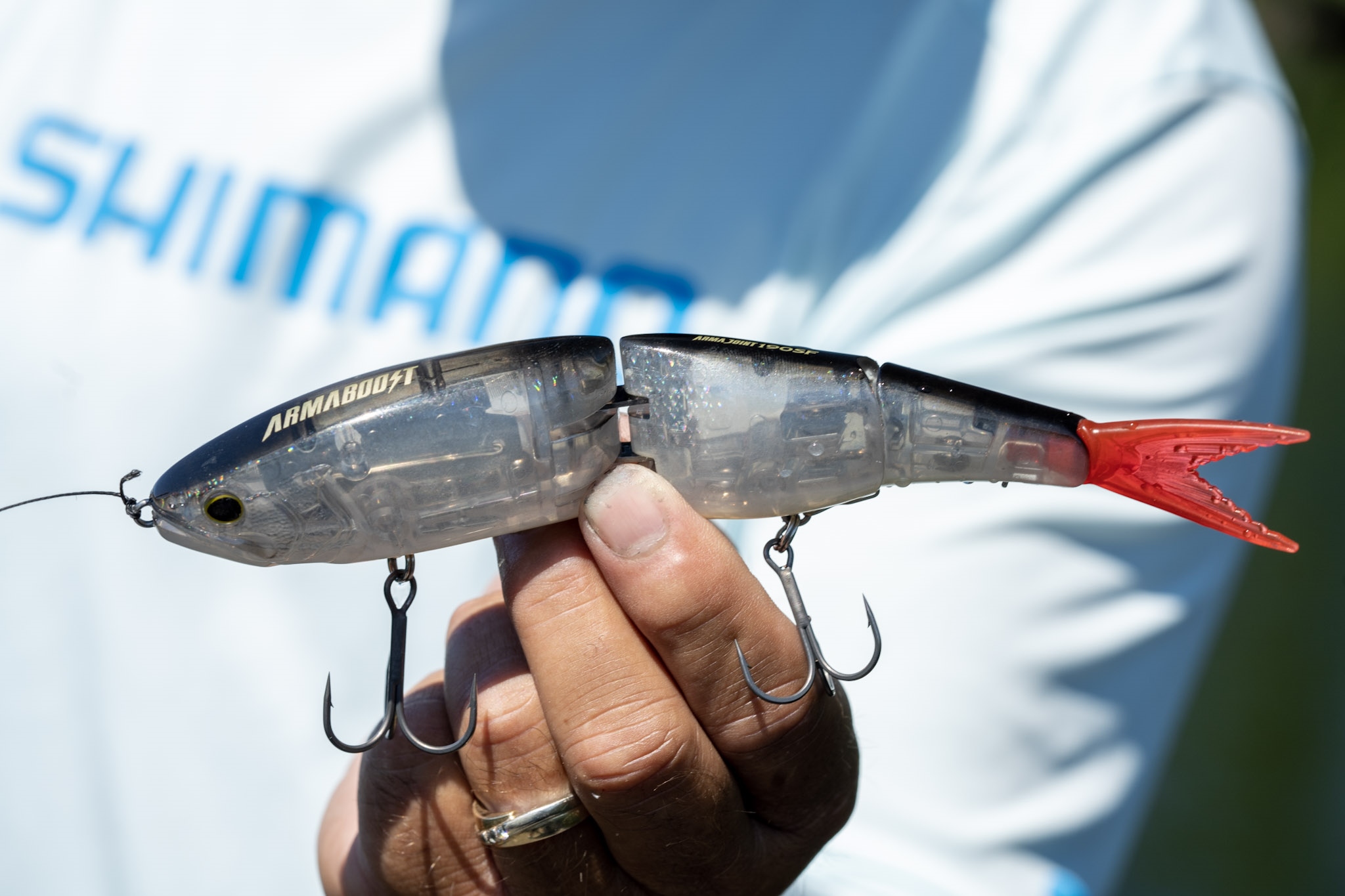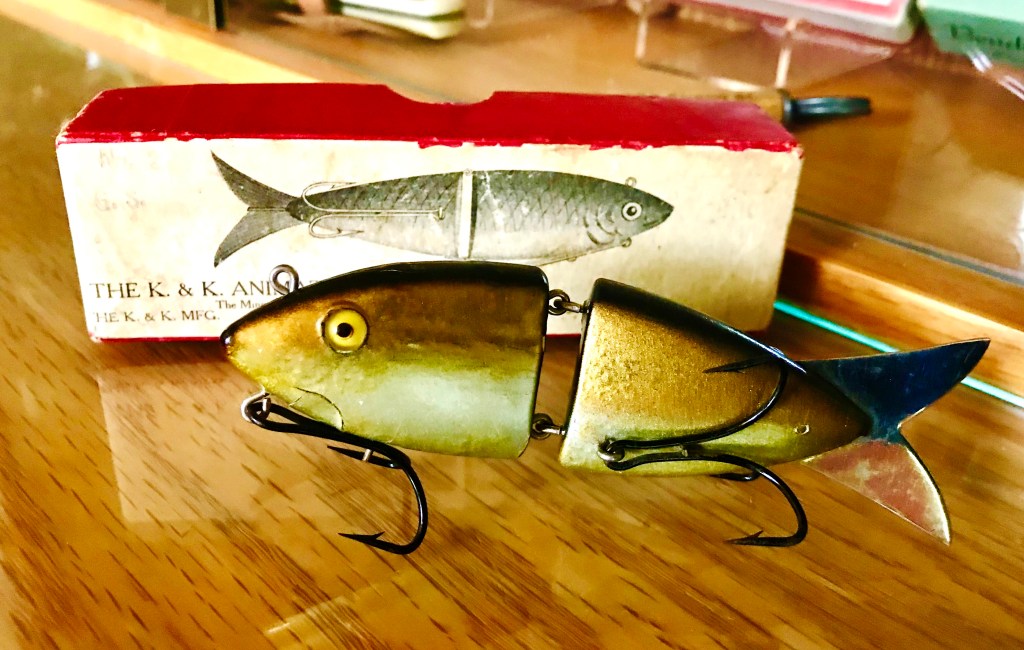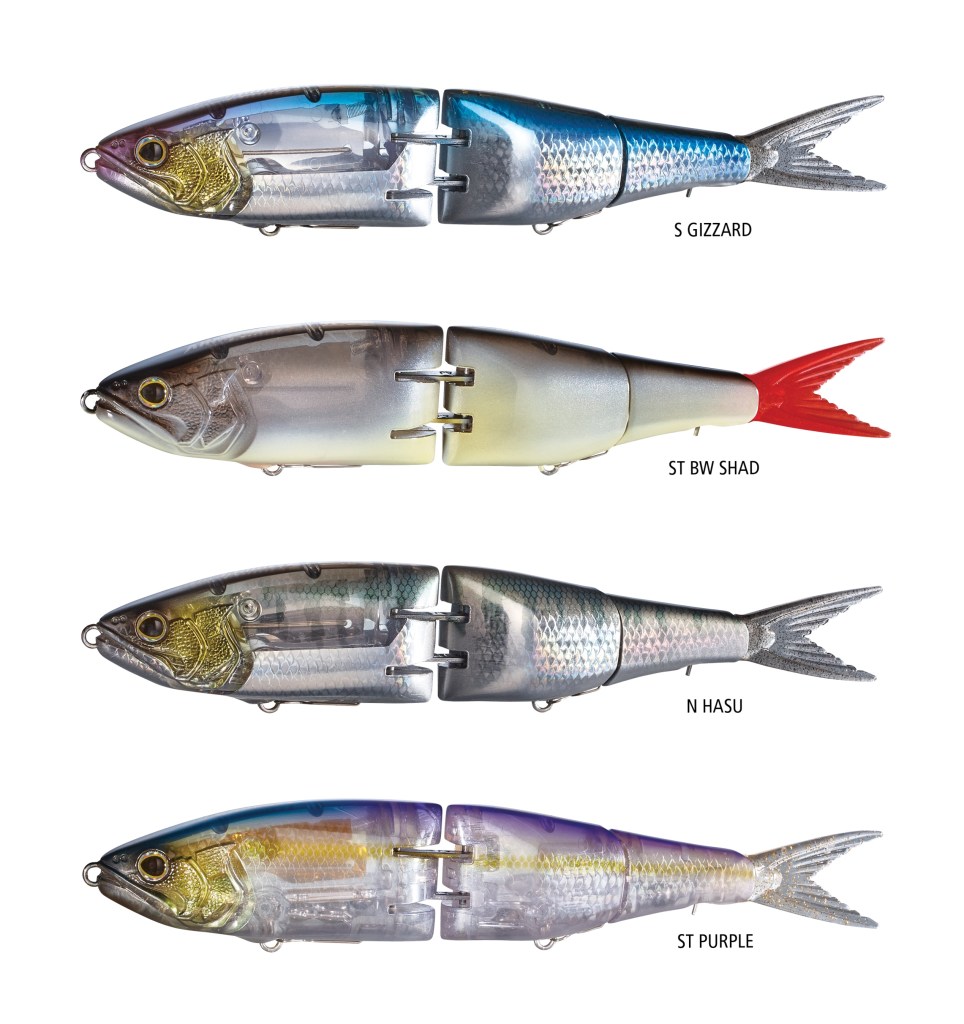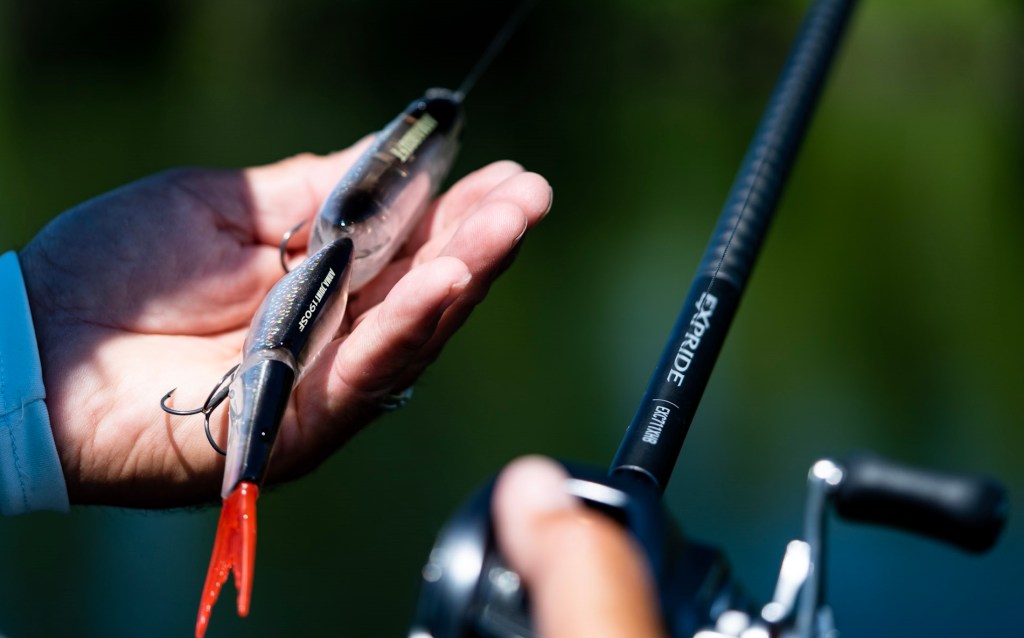
When John D. Kreisser designed his K&K Animated Minnow back in 1906, I’m sure he had no idea of the number of manufacturers that would use his same concept more than a century later.
Considered the first jointed minnow, Kreisser’s lure was shaped from wood and featured glass eyes, a large metal tail fin and breakaway tandem hooks. Its unique hinging design was granted patent number 857,883 on June 25, 1907.
According to the paperwork packaged with each lure, it was touted as “The Minnow That Swims!”

Evidently, sales for the Animated Minnow were good, as Kreisser expanded his offering to include other sizes and profiles, even some non-jointed variations were introduced. But that was then, and this is now. And who could have guessed the number of similar swimbaits that would follow more than 100 years later?
Swimbait situation
Swimbaits similar to Kreisser’s are so popular selection is virtually unlimited. Countless sizes, shapes and colors are currently available through most tackle outlets.
Why? Because they catch fish! And oftentimes, they catch the biggest fish.
There’s something about their true-to-life profiles and swimming action that triggers big bass to strike, or at least follow the lure to within visual range so that a secondary presentation can be made.
That could mean a second cast with the same bait, or the use of a follow-up lure — like a wacky-rig Senko or a fluke-style bait. And if a second attempt fails to produce, at least the fish’s general location is revealed for another try later — a strategy that’s commonly practiced among savvy touring pros.
They’ll make return visits to fish that reveal themselves, believing they will eventually bite. A practice that’s brought me success more times than I can remember — at places like Guntersville, Fork, Chickamauga and others. Big fish would track my swimbait only to refuse it, but later bite on a follow-up presentation with that lure or another.
Size, shape and color
While I catch the majority of my fish using smaller profile swimbaits, when I’m after big bass, I rely on larger profiles — like when I’m on a lake where bass are targeting gizzard shad or large herring. When those are the primary forage, I know the fish feeding on them will usually be larger in size. So I’ll go to lures that range in lengths of 6 to 10 inches (maybe more) and match my color selection to the bait they’re chasing.
Among the best new hard-body entries is the Arma Joint 190SF swimbait by Shimano. I like this lure for a number of reasons.

First, it has a unique hinging feature that allows its body to fold completely in half, which aids in long distance casting. The idea is simple: Less bulk or resistance, the further the lure will travel. And with a collapsible profile, casting accuracy, too, is improved.
Secondly, the Arma Joint will track true at any rate of speed. I can burn it just under the surface or give it a lazy, slightly deeper retrieve, knowing it will maintain a perfect upright swimming action.
But what I like most about the Arma Joint is how it does an about face when paused. The lure literally circles back in the opposite direction, as if it were confronting any would-be followers — an action that I believe forces big bass to strike, in a total reflex reaction. Sort of like hopping a bottom bait to make lethargic bass bite.
When a fish is tracking a swimbait and you pause the retrieve, oftentimes they will lose interest. But if that lure swings around and faces its attacker, predatory instinct takes over.
Tactical gear
To throw big swimbaits, you’ll need the right tackle. We’re talking big rods and stout reels spooled with line heavy enough to withstand the repeated shock of casting heavy lures.
Most savvy swimbaiters use straight fluorocarbon rated between 20- and 25-pound test. Others prefer mid-range braid tipped with a fluorocarbon leader. Still others use straight mono. Whatever your choice, be sure it can handle the rigors of repeated casts with heavier lures, without hindering the swimming action of those lures.

For rods, I prefer Shimano’s Expride series in lengths of 7-feet, 6-inches to 8 feet, in heavy to extra-heavy actions. These rods are stout enough to handle the heaviest of swimbaits and can launch them a mile, yet they taper perfectly for the right tip action.
I pair them with slightly larger than normal casting reels — like Shimano’s Tranx 300 or Curado 300K. These reels feature powerful brass gearing and large profile handles, which work to your advantage with big swimbaits — especially when winching big fish away from thick cover and into the boat.
So many fish are lost on big swimbaits, usually because they’re played too long. I know it goes against conventional wisdom, but from my experience, the longer you play a fish on a big plug, the greater its chances to escape. And that includes swinging them over the gunnel once they’re close to the boat … using their momentum, of course.
Swimbait summary
Although throwing big swimbaits can be fatiguing, the rewards are oftentimes huge.
Throw them around cover and obvious features, like docks, laydowns, riprap and grass edges. If large fish are present, chances are good a big swimbait will pull them out of that cover. And remember; although they may not bite on the first cast, they’ll usually reveal themselves so that you can quickly follow with another presentation or try them again later.
Go here to see more on Shimano’s Arma Joint 190SF swimbait, and here to learn more on John D. Kreisser and his K&K Animated Minnow.
Follow Bernie Schultz on Instagram, Facebook and through his website.





